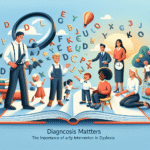
Introduction
Have you ever felt misunderstood in a relationship, as if the words you spoke simply drifted into the ether, inspiring only silence or confusion? Effective communication is a cornerstone of any healthy relationship, but bridging the gap often feels like a daunting task. In today’s fast-paced world, where distractions are abundant, learning how to enhance communication in relationships is more crucial than ever. This article will explore proven strategies, enlightening case studies, and actionable insights to empower you to cultivate deeper connections with your partner, friends, or family.
The Importance of Communication
Why Communication Matters
Communication isn’t just about exchanging words; it’s the bedrock of understanding and intimacy. A study from the Journal of Social and Personal Relationships highlighted that couples who regularly engage in open dialogue report higher levels of relationship satisfaction. When we think about bridging the gap in communication, we must first recognize why it matters. Miscommunication can lead to frustration, resentment, and even breakups, while clear communication fosters trust and intimacy.
The Cost of Poor Communication
Statistics reveal that poor communication is a leading cause of relationship breakdowns. According to a survey conducted by the American Association for Marriage and Family Therapy, nearly 65% of couples cited communication as a significant source of conflict. In essence, poor communication can lead to misunderstandings that snowball into larger issues, making it essential to seek solutions.
Understanding the Barriers to Effective Communication
1. Emotional Barriers
Our emotions can cloud our ability to communicate effectively. When feeling angry or hurt, we may struggle to articulate our feelings constructively. Case Study: In the case of Sarah and Tom, every argument would culminate in hurtful comments rather than addressing the root issue. It wasn’t until they acknowledged their emotional barriers and chose to communicate calmly that they began to see progress.
2. Historical Context
Past experiences can color current interactions. If one partner has experienced betrayal, they may find it hard to trust the other’s intentions. Analysis: The case of Jenna—whose past relationship included emotional manipulation—illustrates how unresolved issues can surface in new relationships. Understanding this context is vital for bridging the gap.
3. External Stressors
Life’s demands, from work to family responsibilities, can pull attention away from meaningful communication. The study by the American Psychological Association found that high-stress levels correlate with a decrease in relationship satisfaction. Kelly and Mark’s hectic schedules left little room for conversation, resulting in feelings of disconnect until they prioritized weekly “check-ins.”
Strategies for Effective Communication
1. Active Listening
Active listening is foundational for bridging the gap in communication. Unlike passive listening, which involves merely hearing what the other person says, active listening means fully engaging with their words and emotions. Techniques like nodding, summarizing what was said, and asking follow-up questions show that you value the speaker’s thoughts.
2. Open-Ended Questions
Asking open-ended questions can enhance communication by encouraging deeper discussions. Instead of yes/no inquiries, phrases like “What do you think about…?” or “How did that make you feel?” pave the way for meaningful dialogue. For example, instead of asking your partner if they had a good day, try asking, “What was the best part of your day?”
3. Create a Conducive Environment
The setting in which you communicate matters significantly. A peaceful, distraction-free environment fosters an open exchange. Table 1 illustrates ideal locations for important conversations based on research by the Communication Research journal:
| Environment | Benefits |
|---|---|
| Home Setting | Comfort and safety |
| Nature | Reduces stress and encourages creativity |
| Café | Neutral ground, stimulating atmosphere |
4. Use Technology Wisely
In today’s digital age, technology can both enhance and hinder communication. Utilize messaging apps for quick check-ins but avoid relying solely on texts for serious conversations. A study by the Pew Research Center found that face-to-face communication increases relationship satisfaction.
5. Regular Check-ins
Establishing a routine for discussing feelings can create a safe space for open dialogue. This could be a weekly coffee date or a dedicated evening to discuss any relationship concerns.
Case Studies: Real-World Applications
Case Study 1: Sarah and Tom
As mentioned earlier, Sarah and Tom’s relationship was stuck in a cycle of misunderstandings due to emotional barriers. After attending a workshop on active listening and communication techniques, they learned to express their feelings without defensiveness. They reported a significant improvement in their relationship satisfaction.
Case Study 2: Jenna and Mark
Jenna’s struggles with trust from past relationships created tension with her new partner, Mark. Through honest conversations and establishing boundaries, they successfully bridged their communication gap, allowing Jenna to feel secure in their relationship.
Case Study 3: Kelly and Mark
Kelly and Mark’s hectic schedules caused frustration and isolation. By instituting weekly check-ins, they nurtured their connection and minimized misunderstandings. The initiative helped them feel more in sync, even during busy times.
Bridging the Gap: Practical Techniques
1. Nonverbal Communication
Body language accounts for a significant portion of our communication. Ensure your expressions align with your words. For instance, maintaining eye contact conveys interest and sincerity.
2. Empathy in Conversations
Understanding your partner’s emotions can enhance clarity. Validate their feelings, which can help reduce defensiveness.
3. Avoid Assumptions
Assumptions can lead to miscommunication. Instead of presuming what someone feels, ask them directly.
4. Reflective Communication
Encourage reflective communication where each partner interprets what the other said. This promotes understanding and minimizes miscommunication.
5. Seek Professional Help
Sometimes, seeking couples therapy or communication coaching can provide invaluable tools and frameworks for better communication.
Conclusion
Bridging the gap: how to enhance communication in relationships is not merely a theoretical discussion—it’s a practical, actionable journey. By understanding the barriers, employing effective strategies, and prioritizing meaningful dialogue, you can strengthen your connections and foster a deeper sense of intimacy.
Actionable Insights
As you move forward, consider implementing at least one new communication strategy each week. Whether it’s practicing active listening or scheduling regular check-ins, these small changes can lead to profound transformations in your relationships. Remember, the journey of enhancing communication is ongoing, and every conversation is a step toward building a stronger bond.
FAQs
1. What are the signs of poor communication in a relationship?
Signs include frequent misunderstandings, feelings of resentment, and emotional distance.
2. How can I improve my listening skills?
Practice active listening techniques, such as summarizing and asking follow-up questions.
3. When should I seek professional help for communication issues?
If conflicts become frequent and unresolved or if communication feels consistently strained, therapy can be beneficial.
4. Can technology enhance communication?
Yes, technology can facilitate communication, but face-to-face interactions are essential for relationship satisfaction.
5. How do I start having difficult conversations?
Begin by identifying a suitable environment, approaching the topic with empathy, and using open-ended questions to encourage dialogue.
By following these guidelines, you can take significant steps toward bridging the gap in communication, enhancing not just your relationships, but your overall quality of life.

















